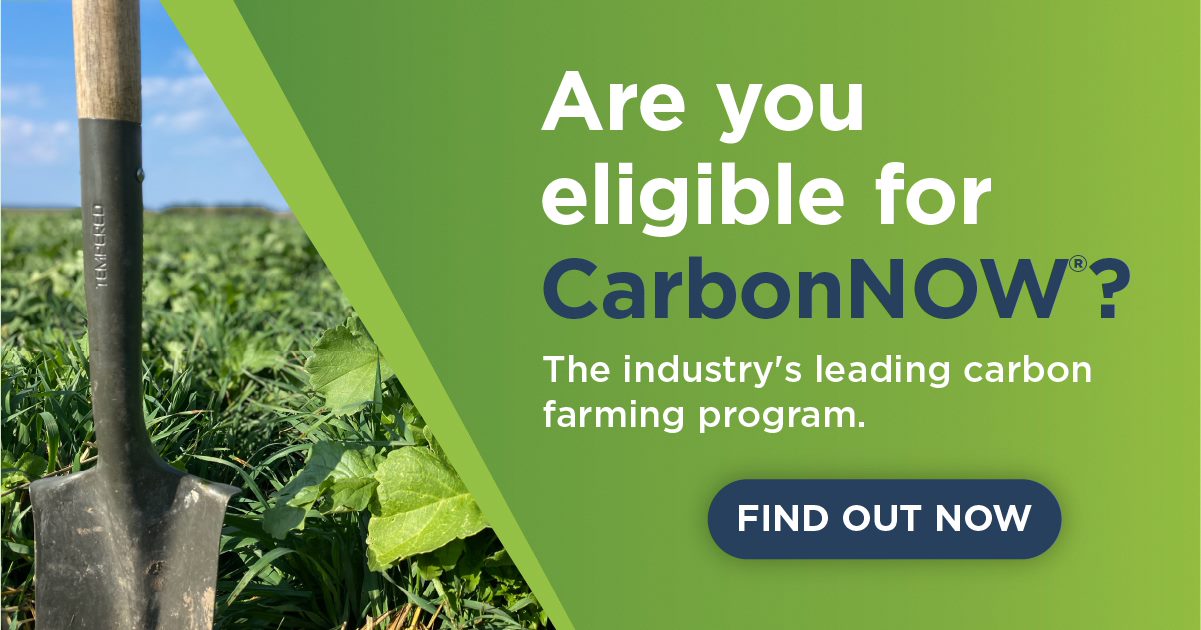
3 Questions You Need to Ask About Carbon Farming Payments
How different program payment structures can mean different financial outcomes for farmers.
As carbon farming programs expand around the country, so does skepticism on the true financial benefit these programs provide to growers. The concern is warranted: many programs make claims of substantial carbon payments and large financial payoffs, only to leave farmers frustrated and disappointed by the actual money earned.
It’s important to understand the payment structure for each carbon farming program you’re considering, as payments can vary greatly between programs and their terms are sometimes misleading.
This blog addresses these questions:
- Is it better to be paid per acre farmed or per metric ton of carbon?
- What does it cost to participate?
- When will I get paid?
Carbon Farming Payments: Is it Better to be Paid Per Acre Enrolled or Per Metric Ton of Carbon?
Carbon farming programs typically pay farmers in one of two ways:
- Per Acre: This is an easy-to-understand payment method because payments are based on the acres enrolled in the program. If a program says they will pay you $12/acre, you can expect to receive $12/acre.
- Per Metric Ton of Carbon: This payment structure is less straightforward. Payments that result in “per metric ton of carbon sequestered” can vary greatly depending on how much carbon is sequestered on your land.
In the case of per metric ton programs, payments vary wildly, but are typically promoted at anywhere between $10-$40 per metric ton. While that sounds rewarding, farmers often actually receive a lot less.
Some programs estimate their farmers to generate between 0.1 and 0.4 credits per acre in their first year—meaning they will only receive payment for a fraction of a single credit.
Let’s take a look at an example using $20 PER METRIC TON of carbon. If the estimations are correct, the farmer may only be paid $2-8 per acre. And often, other fees and costs take away from that amount.
Upfront Costs and Program Fees: What Does it Cost to Participate?
Part of the reason that carbon farming programs vary greatly in their financial benefit to growers has to do with the costs and fees associated with program participation.
Typical costs associated with carbon farming programs include:
- New equipment
- Soil sampling fees
- Third-party credit verification
- Administrative fees
These costs diminish any profits farmers accrue from generating carbon credits. In addition, several programs mandate that farmers show receipts for all capital expenses to get paid.
All upfront costs and program fees need to be estimated before joining a carbon program, so that growers know how much they can actually expect to profit from carbon credits sold.
Payment Timing: When Will I Get Paid?
Farmers who join a carbon farming program are investing time and resources into the program with the expectation that their investment will soon pay off. Yet the amount of time it will take to see that ROI can vary greatly between programs.
There are a few things to consider:
- The more straight-forward programs pay on a guaranteed annual basis. Programs with the lowest risk to growers will guarantee a minimum payment, and provide clarity on the timeline of payments. Some programs offer performance bonuses based on true carbon sequestered, as shown from data retrieved from annual soil sampling.
- Program payments sometime occur after credits are generated and sold. Many programs wait for the grower to obtain third-party verification to sell carbon credits, and only pay farmers after credits are generated and sold. In the worst cases, it can take years before the farmer sees any payment.
- Some programs distribute payments in installments vesting over a multi-year period. Programs may also distribute payments in installments vesting over a multi-year period, which reduces the amount of each individual payment. Watch out for “results may vary” wording in regards to a carbon program’s payment timing.
How are Locus AG’s CarbonNOW Program Payments Structured?
Because of the variance in payment structures, farmers have been somewhat skeptical of joining a program, and rightly so. Locus AG’s CarbonNOW program has been built in a way that addresses many of these payment challenges, and includes:
- Annual, guaranteed payments with the potential of additional performance bonuses
- No program fees, or costly equipment purchases
- Free value-add opportunities, such as data collection assistance, annual soil sampling
- Higher ROI per acre from use of Locus AG biologicals
Click here to find out if you’re eligible for CarbonNOW.
Summary
It’s critical to know what to look for when assessing different carbon farming programs, including payment terminology and which questions to ask. This can help farmers determine which programs to avoid and which could generate significant profits and a higher ROI.
Want to learn how Locus AG vital biologicals can increase your yields and profits?
Fill out the form below and one of our agricultural experts will be in touch.




